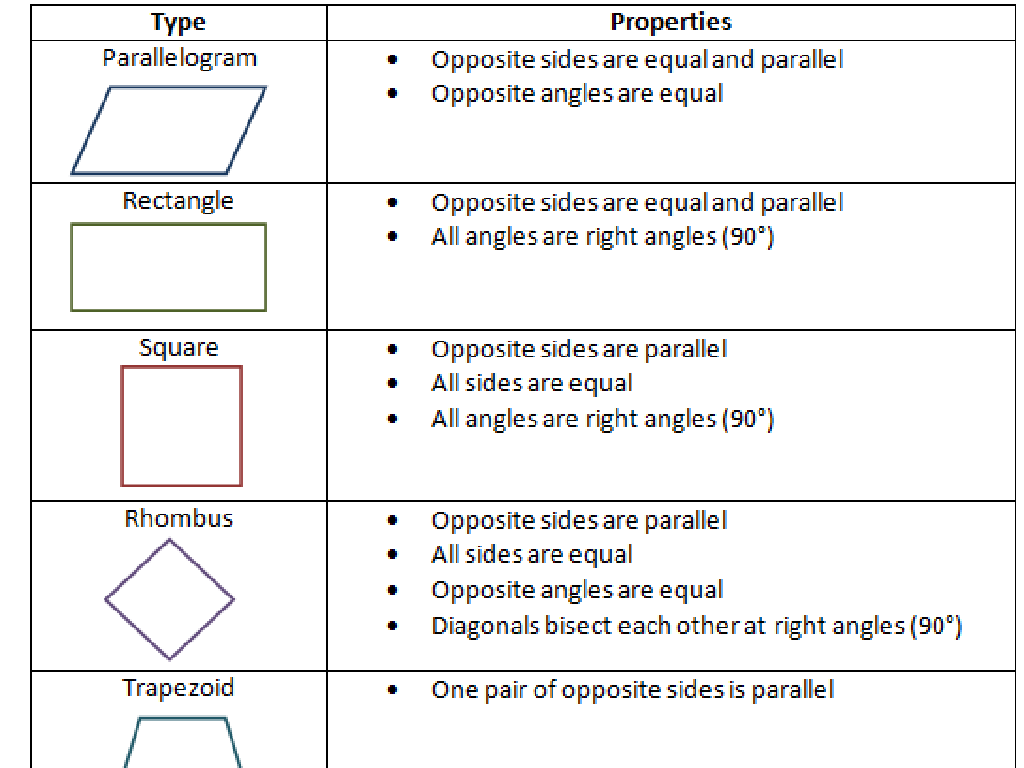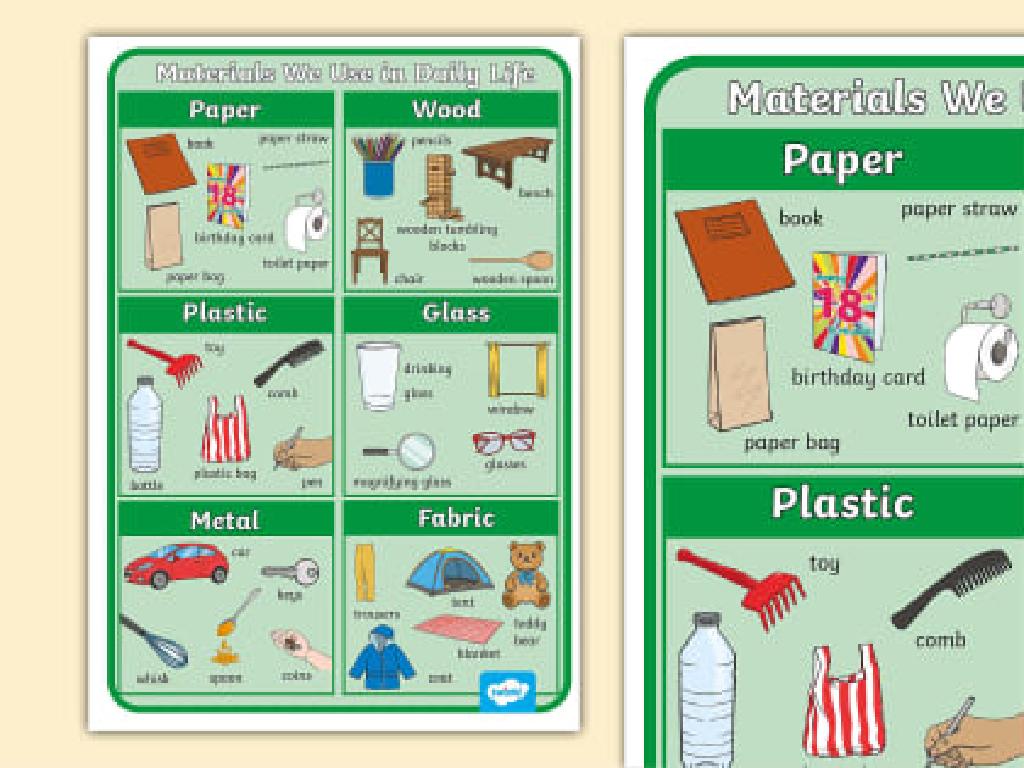Diffusion Across Membranes
Subject: Science
Grade: Eighth grade
Topic: Solutions
Please LOG IN to download the presentation. Access is available to registered users only.
View More Content
Diffusion Across Membranes in Solutions
– Understanding substance movement
– Defining Diffusion
– Movement of particles from high to low concentration
– Diffusion’s role in cells
– Essential for nutrient and waste transport
– Significance for cellular function
– Maintains equilibrium, vital for cell health
|
This slide introduces the concept of diffusion across membranes, a key process in cellular function. Begin by explaining how substances move within the body, focusing on the natural tendency of particles to move from areas of higher concentration to areas of lower concentration. Define diffusion in simple terms and discuss its critical role in transporting nutrients into cells and waste out of them. Emphasize the importance of diffusion in maintaining homeostasis within the cell, ensuring that cells function properly. Use examples like oxygen entering cells and carbon dioxide leaving to illustrate the concept. Encourage students to think of diffusion as a fundamental process that supports life at the cellular level.
Understanding Cellular Membranes
– Define cellular membranes
– Thin layers that surround cells
– Membranes’ role in cells
– They control what enters and exits the cell
– Types of cellular membranes
– E.g., plasma membrane, mitochondrial membrane
– Membrane structure and function
– Composed of lipids and proteins, they provide a barrier and facilitate transport
|
This slide introduces students to the concept of cellular membranes, which are essential components of all cells. Begin by defining a membrane as a protective barrier that encloses a cell. Discuss the role of membranes in regulating the movement of substances in and out of the cell, maintaining homeostasis. Highlight the different types of membranes, such as the plasma membrane that surrounds the cell, and the mitochondrial membrane within the cell. Explain that these membranes are made up of lipids and proteins, which contribute to their selective permeability and functionality in processes like diffusion. Encourage students to think about how membranes might affect the behavior of substances at a microscopic level.
Understanding Diffusion Across Membranes
– Explaining the diffusion process
– Movement of particles from high to low concentration
– Everyday examples of diffusion
– Perfume aroma spreading in air, sugar dissolving in tea
– Factors influencing diffusion rate
– Temperature, medium, concentration gradient
|
This slide aims to clarify the concept of diffusion, which is a fundamental process in science where particles move from an area of higher concentration to an area of lower concentration. Use everyday examples like the spreading of a perfume scent or sugar dissolving in tea to make the concept relatable. Discuss how various factors such as temperature, the medium through which diffusion occurs, and the concentration gradient can affect the rate at which diffusion happens. Encourage students to think of other examples of diffusion they encounter in daily life and consider how the factors discussed might influence these scenarios.
Diffusion in Biological Systems
– How Diffusion functions in the body
– Molecules move from high to low concentration areas, like oxygen entering cells.
– Diffusion’s role in cell survival
– Cells require nutrients and waste removal to survive, both achieved through diffusion.
– Comparing Diffusion and Osmosis
– While diffusion involves solute movement, osmosis is the movement of water across membranes.
– Key differences and examples
– For example, oxygen and carbon dioxide diffuse in and out of cells, while osmosis regulates water balance.
|
This slide aims to explain the concept of diffusion within biological systems, particularly in the human body. It’s crucial for students to understand that diffusion is a passive transport mechanism where molecules move from areas of higher concentration to lower concentration, such as oxygen and carbon dioxide exchanging during respiration. Emphasize the importance of diffusion in maintaining cellular function by supplying nutrients and expelling waste. Contrast diffusion with osmosis, highlighting that osmosis specifically refers to water movement across a semi-permeable membrane. Use examples like the exchange of gases in the lungs and the absorption of water in the kidneys to illustrate these processes. Encourage students to think of other examples where diffusion and osmosis occur in the body.
The Experiment: Diffusion Through a Membrane
– Set up a diffusion experiment
– We’ll use simple materials to observe diffusion
– Make predictions on outcomes
– Based on our knowledge, what do we expect to happen?
– Follow safety protocols
– Always wear safety goggles and gloves
– Observe and record results
|
This slide introduces the class to a hands-on experiment on diffusion through a membrane. Students will set up an experiment using materials like a semi-permanent membrane and various solutions to observe the process of diffusion. They will be asked to predict the results of the experiment based on their understanding of diffusion. Emphasize the importance of safety measures, such as wearing goggles and gloves, to protect themselves during the experiment. After the setup, students should carefully observe and record the diffusion process and the results. This practical approach helps students to better grasp the concept of diffusion and its applications.
Observing Diffusion in Action
– Record experiment observations
– Note color changes, time taken for scent to spread, etc.
– Understand the experiment results
– Analyze why substances moved or changed over time
– Relate observations to diffusion theory
– How do our results show diffusion at work?
– Discuss the importance of diffusion
|
This slide is aimed at consolidating the students’ understanding of diffusion through hands-on experiment observations. Students should record any changes they observe during the experiment, such as color diffusion in water or the time it takes for a scent to fill a room. Understanding the results involves analyzing why and how the substances moved or changed, which will help them grasp the concept of diffusion. Relating these observations back to the theory of diffusion will solidify their understanding of the process. Discuss why diffusion is important in biological systems, such as nutrient and oxygen transport in the body.
Real-Life Applications of Diffusion
– Kidneys and waste removal
– Kidneys filter blood, using diffusion to move waste into urine
– Diffusion in the respiratory system
– Oxygen and carbon dioxide exchange in lungs via diffusion
– Diffusion’s role in ecosystems
– Nutrients and gases diffuse to sustain aquatic life
– Impact of diffusion on life
– Diffusion is essential for nutrient distribution and waste disposal
|
This slide explores the practical applications of diffusion in biological systems. Students will learn how diffusion is crucial for the kidneys to filter waste from the blood into the urine. They will also understand how diffusion allows for the exchange of oxygen and carbon dioxide in the lungs during respiration. In ecosystems, diffusion plays a vital role in the distribution of nutrients and gases, particularly in aquatic environments where it sustains life. Overall, the impact of diffusion on living organisms is profound, as it is a key process for maintaining homeostasis and enabling various life-sustaining functions. Encourage students to think of other examples where diffusion is essential in both biological systems and the environment.
Class Activity: Modeling Diffusion
– Engage in a group activity
– Gather all necessary materials
– Colored water, a clear container, and a divider
– Follow the step-by-step guide
– Add colored water to one side, remove divider, watch the color spread
– Observe and discuss results
– How did the color spread? What does this tell us about diffusion?
|
This activity is designed to visually demonstrate the process of diffusion to the students. Divide the class into small groups and provide each group with the necessary materials: a clear container, colored water, and a removable divider. Students will add the colored water to one side of the container, then carefully remove the divider to observe how the color spreads into the clear water, representing diffusion. Encourage students to take notes on the rate of color spread and discuss their observations. This hands-on experience will help solidify their understanding of diffusion as a movement of particles from an area of higher concentration to an area of lower concentration.
Diffusion Across Membranes: Summary & Importance
– Recap of Diffusion principles
Diffusion is the movement of particles from high to low concentration.
– Significance of Diffusion
Understanding Diffusion is crucial for grasping biological processes like respiration.
– Engage in Q&A session
– Clarify any doubts
|
This slide aims to consolidate the students’ understanding of diffusion and its role in biological systems. Begin by summarizing the key principles of diffusion, emphasizing that it’s a passive transport mechanism where molecules move to equalize concentration. Highlight why it’s important for students to understand diffusion, as it underpins many life processes, including how cells obtain nutrients and remove waste. Conclude the lesson with a Q&A session, providing an opportunity for students to ask questions and clarify any doubts they may have. This reinforces learning and ensures that students are well-prepared for subsequent topics that build on this foundational knowledge.
Homework: Diffusion in Digestion
– Research diffusion in digestion
– How does diffusion help break down food?
– Prepare a presentation
– Summarize your findings in a clear, concise presentation
– Understand due date & criteria
– Check assignment for specific requirements and due date
– Reflect on the importance
|
This assignment encourages students to explore how diffusion plays a crucial role in the digestive system, particularly in the breakdown and absorption of nutrients. Students should use reliable sources to gather information and create a presentation that summarizes their research. Emphasize the importance of understanding the assignment criteria and adhering to the due date. This task will help students develop their research and presentation skills while reinforcing the concept of diffusion in a biological context. Encourage them to think about how diffusion affects the efficiency of nutrient uptake and the overall functioning of the digestive system.





